94 results in Cambridge Library Collection - Zoology
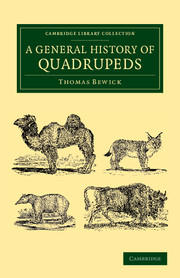
A General History of Quadrupeds
-
- Published online:
- 05 October 2014
- Print publication:
- 13 June 2013
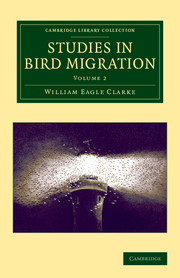
Studies in Bird Migration
-
- Published online:
- 05 October 2014
- Print publication:
- 02 January 2014
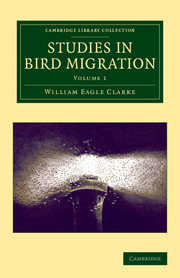
Studies in Bird Migration
-
- Published online:
- 05 October 2014
- Print publication:
- 02 January 2014
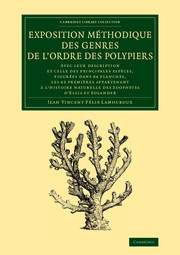
Exposition méthodique des genres de l'ordre des polypiers
- Avec leur description et celle des principales espèces, figurées dans 84 planches, les 63 premières appartenant à l'histoire naturelle des zoophytes d'Ellis et Solander
-
- Published online:
- 05 October 2014
- Print publication:
- 20 February 2014
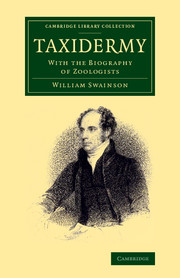
Taxidermy
- With the Biography of Zoologists
-
- Published online:
- 05 October 2014
- Print publication:
- 02 January 2014
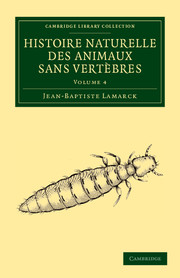
Histoire naturelle des animaux sans vertèbres
-
- Published online:
- 05 October 2014
- Print publication:
- 06 May 2013
- First published in:
- 1817

Histoire naturelle des animaux sans vertèbres
-
- Published online:
- 05 October 2014
- Print publication:
- 06 May 2013
- First published in:
- 1818

History of British Birds
-
- Published online:
- 05 October 2014
- Print publication:
- 05 September 2013

Histoire naturelle des animaux sans vertèbres
-
- Published online:
- 05 October 2014
- Print publication:
- 06 May 2013
- First published in:
- 1819
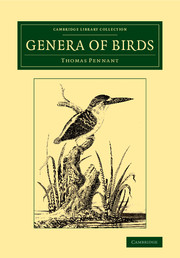
Genera of Birds
-
- Published online:
- 05 October 2014
- Print publication:
- 02 January 2014

A Naturalist's Sojourn in Jamaica
-
- Published online:
- 05 October 2014
- Print publication:
- 31 October 2013

The Rev. J. G. Wood
- His Life and Work
-
- Published online:
- 05 October 2014
- Print publication:
- 21 November 2013
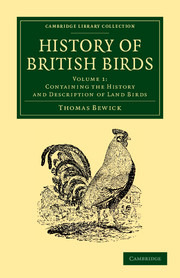
History of British Birds
-
- Published online:
- 05 October 2014
- Print publication:
- 05 September 2013
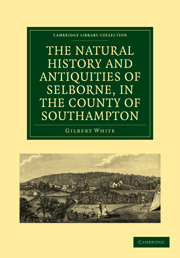
The Natural History and Antiquities of Selborne, in the County of Southampton
-
- Published online:
- 05 September 2014
- Print publication:
- 02 June 2011
- First published in:
- 1789
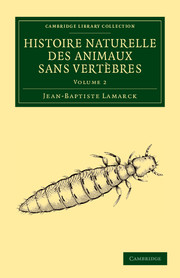
Histoire naturelle des animaux sans vertèbres
-
- Published online:
- 05 July 2014
- Print publication:
- 06 May 2013
- First published in:
- 1816
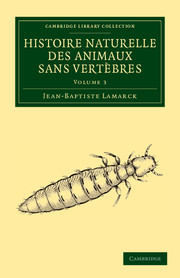
Histoire naturelle des animaux sans vertèbres
-
- Published online:
- 05 July 2014
- Print publication:
- 06 May 2013
- First published in:
- 1816
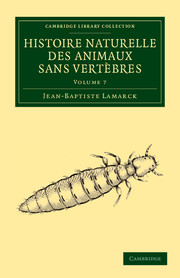
Histoire naturelle des animaux sans vertèbres
-
- Published online:
- 05 July 2014
- Print publication:
- 06 May 2013
- First published in:
- 1822

Histoire naturelle des animaux sans vertèbres
-
- Published online:
- 05 July 2014
- Print publication:
- 06 May 2013
- First published in:
- 1815
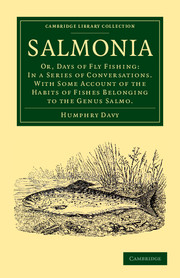
Salmonia
- Or, Days of Fly Fishing: In a Series of Conversations. With Some Account of the Habits of Fishes Belonging to the Genus Salmo
-
- Published online:
- 05 April 2014
- Print publication:
- 28 February 2013
- First published in:
- 1828
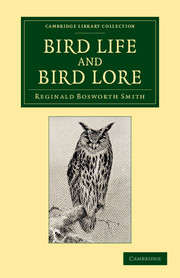
Bird Life and Bird Lore
- With Illustrations
-
- Published online:
- 05 December 2013
- Print publication:
- 28 March 2013
- First published in:
- 1905

